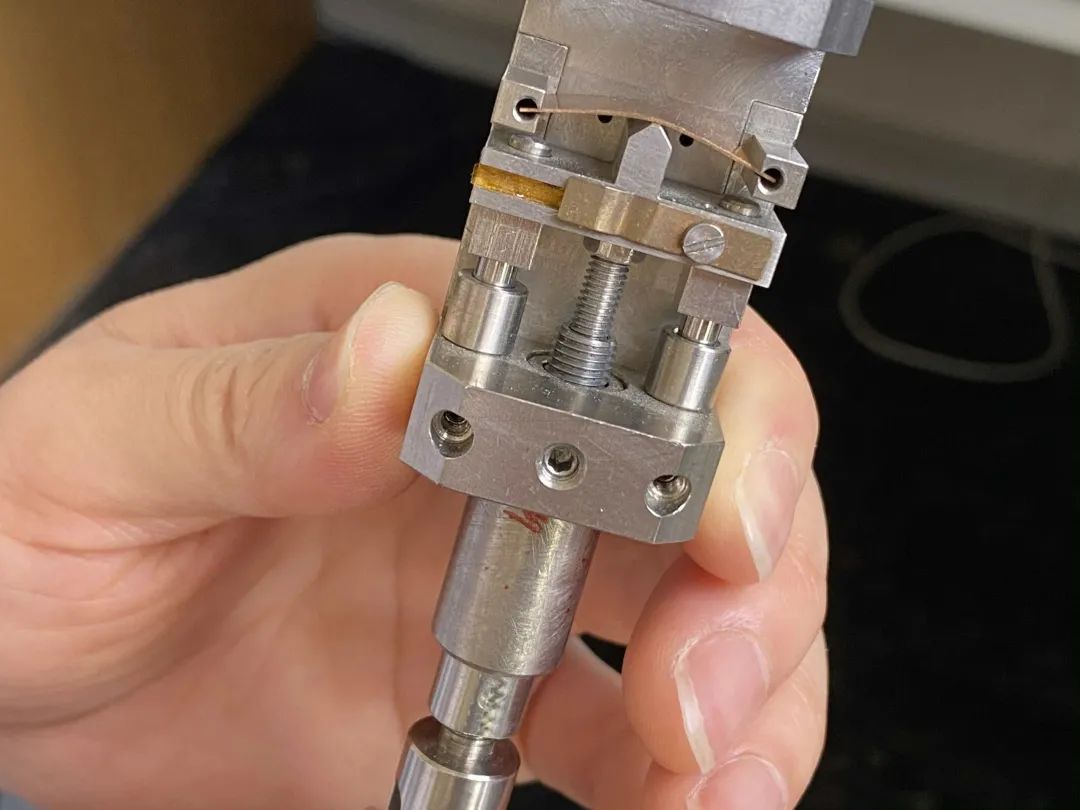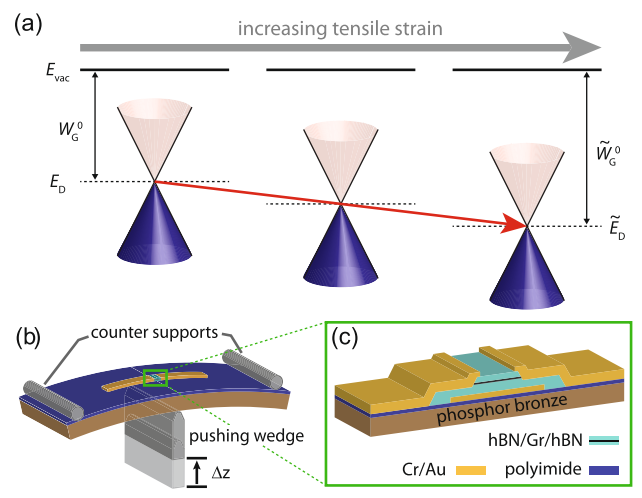Graphene consists of a single layer of carbon atoms arranged in a hexagonal lattice. This material is very flexible and has excellent electronic properties, making it attractive for many applications—especially electronic components.
Researchers led by Professor Christian Schönenberger from the Swiss Institute of Nanoscience and the Department of Physics of the University of Basel studied how to manipulate the electronic properties of materials through mechanical stretching. In order to do this, they developed a framework through which the atomically thin graphene layer can be stretched in a controlled manner while measuring its electronic properties.
When pressure is applied from below, the component will bend. This causes the embedded graphene layer to elongate and change its electrical properties.
Sandwiches on the shelf
The scientists first produced a “sandwich” sandwich with a layer of graphene between two layers of boron nitride. The components provided with electrical contacts are applied to the flexible substrate.
Changed electronic state The researchers first used optical methods to calibrate the stretching of graphene. They then used electrical transport measurements to study how the deformation of graphene changes the electron energy. These measurements need to be performed at minus 269°C to see energy changes.
Device energy level diagrams of a unstrained graphene and b strained (green shaded) graphene at the neutral point of charge (CNP). "The distance between the nuclei directly affects the characteristics of the electronic states in graphene," Baumgartner summarized the results. "If the stretching is uniform, only the electron speed and energy can change. The change in energy is essentially the scalar potential predicted by theory, and we have now been able to prove this through experiments." It is conceivable that these results will lead to the development of sensors or new types of transistors. In addition, graphene, as a model system for other two-dimensional materials, has become an important research topic worldwide in recent years.
Post time: Jul-02-2021









